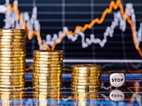Buying On The Dips Makes Excellent Sense In This Gold Bull Market
 Last week the gold price saw a big pullback after the best start to the year since 1974. By the end of the week, market sentiment was poor. Commentators were almost as negative as at the New Year though not all of them.
Last week the gold price saw a big pullback after the best start to the year since 1974. By the end of the week, market sentiment was poor. Commentators were almost as negative as at the New Year though not all of them.
Elliott-Wave chartist Avi Gilbert noted that when silver hits $50 you would not worry about having bought at $12.75 or $15 an ounce, but kick yourself for not having bought it. The owner of this website Vronsky penned an article flagging up the 25 per cent slump in global bank stocks since the start of this year as pointing to another global financial crisis in progress.
Brussels Terror Attacks
Nothing changed to alter that last week. US housing market data was at best equivocal. The terrorist attacks in Brussels produced a safe haven flight to the US dollar hitting commodity prices including gold but hardly pointed to a happy situation in the world’s largest economic bloc, the 28-nation European Union.
Quite the contrary: blood on the streets of Brussels may be the final nail in the coffin of the EU if this now means that the British public vote to leave in the referendum being held on June 23rd. A ‘Brexit' as it known by the second largest European economy would be far more damaging than the expected departure of tiny Greece in 2011, a year when gold prices hit $1,923 an ounce.
The US, of course, has its own election in November and some economists reckon the election of Donald Trump as president would be a bigger disaster for the global economy than the Brexit. What on earth happens if we get both? That’s the way the opinion polls are moving.
If nothing else this environment is going to make it very difficult for the Federal Reserve to raise its key interest rates any further. Indeed, the reverse is likely to happen. Hungary’s central bank was the latest country to join the negative interest rate crowd last week.
Negative Interest Rates
Will the global banks be able to tighten monetary policy as a second global financial crisis emerges? Will they react to stock market crashes by cutting off the oxygen of easy money or add to it?
Fed chair Janet Yellen already looks like a nervous old lady pondering whether to cross the road. She may just stay where she is or decide to go home. This will be no time for bold adventures and last December’s raising of rates for the first time in nine years will be recognized as a policy error in need of correction.
And where will the price of gold and silver go in this cyclical and structural downturn in the global economy with crashing stock markets and central banks printing money like crazy?
They can only go up and up. We saw the double-bottom in the gold price last year and the strong break out at the start of the year. But where this year is different from last year’s strong early performance is that there is every reason to expect a follow through and not much hope that disaster can be averted just one more time.
Gold:Silver Ratio
Just look at the gold price to silver price ratio as Bloomberg did before the precious metal sell-off last week.
If you look at the last three decades then every time this ratio has past eighty then the price of silver and gold has had huge advances. This year the price of gold went up faster than silver and pushed the ratio into this highly significant position. Silver was just starting to play catch up with gold - prompted in part by Bloomberg spreading the news about this event - when last week’s price action occurred.
Why should this rule be proven wrong this time? Across the commodities complex prices have been on the rebound recently, particularly evident in the 50 percent retracement of the oil price from its double-bottom lows.
Perhaps the previous selling was overdone. Perhaps it went far enough to actually damage supply or, at least, the future supply outlook. Maybe it was driven by speculation and the money is shifting back into hard assets as the inflation outlook rises, and indeed it will further as commodity prices lift up. Anyway, we know commodities move in cycles and what goes down will eventually come back up.
Price Spike Indicator
If so where would that leave us with the gold:silver ratio? The move across the eighty line could still herald a massive spike in precious metal prices. The last time this happened we got silver to $49 and gold at $1,923 an ounce.
Would this price be surprising on market fundamentals if the UK voted to leave the EU precipitating an economic fallout that made the Greek debt crisis of 2011 look like a walk in the park?
It will perhaps an irony of markets that the horrific terrorist attacks in Brussels that now make this even more likely initially resulted in a fall in gold prices. In fact, the carnage in the capital of the EU may have precisely the reverse effect in the not-very-long term by persuading British voters to vote to leave in the referendum on June 23rd.
So there is are very good fundamental and technical reasons to be confident that last week’s slump in precious metal prices is a buying opportunity.
Election Year
This is not 2015 with the possibility of Fed rate hikes clouding the outlook for a rising gold price, although that was one of the main sources of the fog surrounding prices last week. For 2016 has much bigger issues in the pipeline.
Imagine where the gold and silver price will be by the end of the year if first Europe is plunged into crisis by Britain voting to leave the EU and then Donald Trump becomes President of the United States. Note that we have not even discussed the outlook for the world’s fastest deteriorating major economies: China and Japan. Hold on to your gold and buy some more!

















